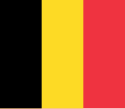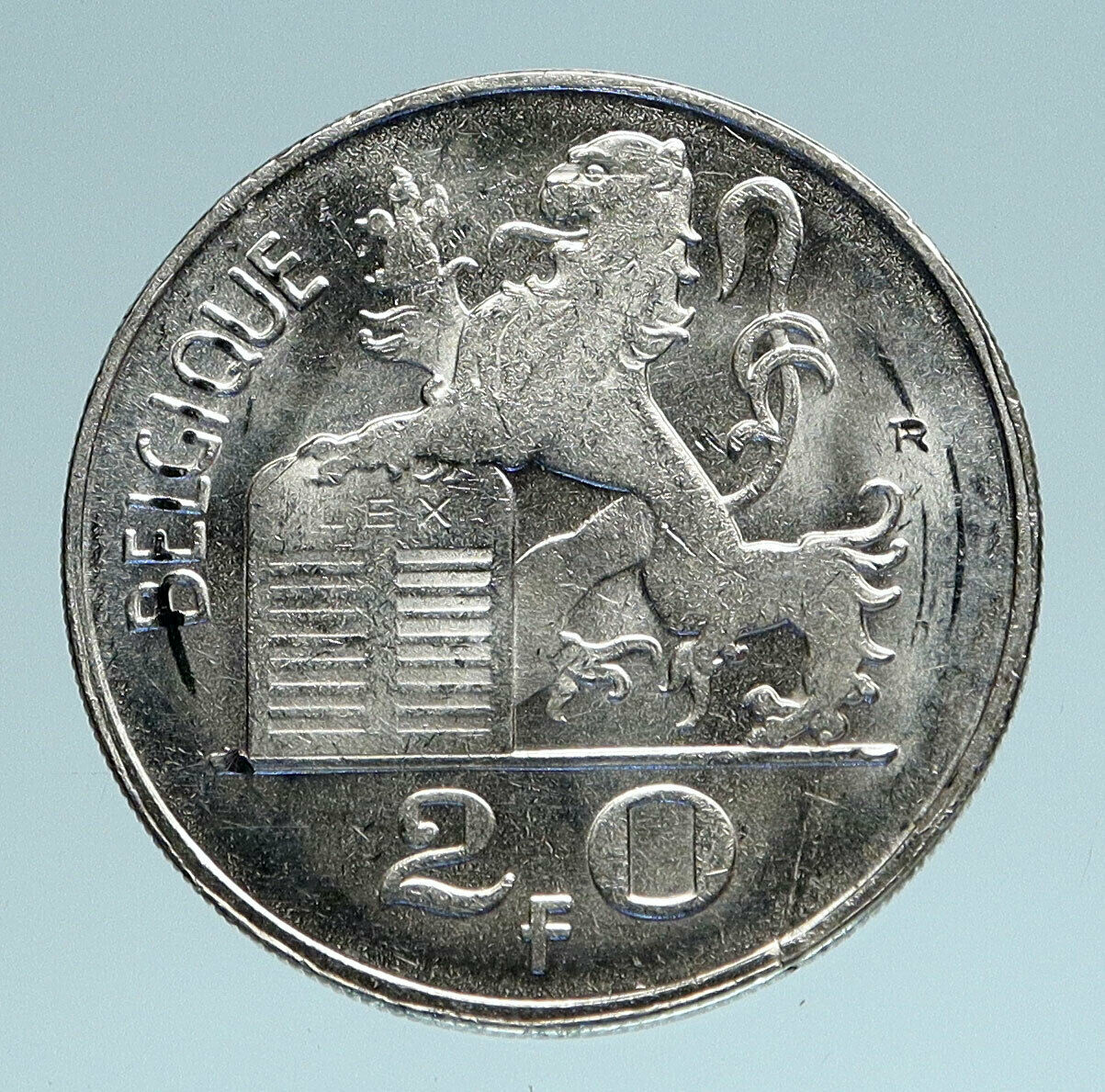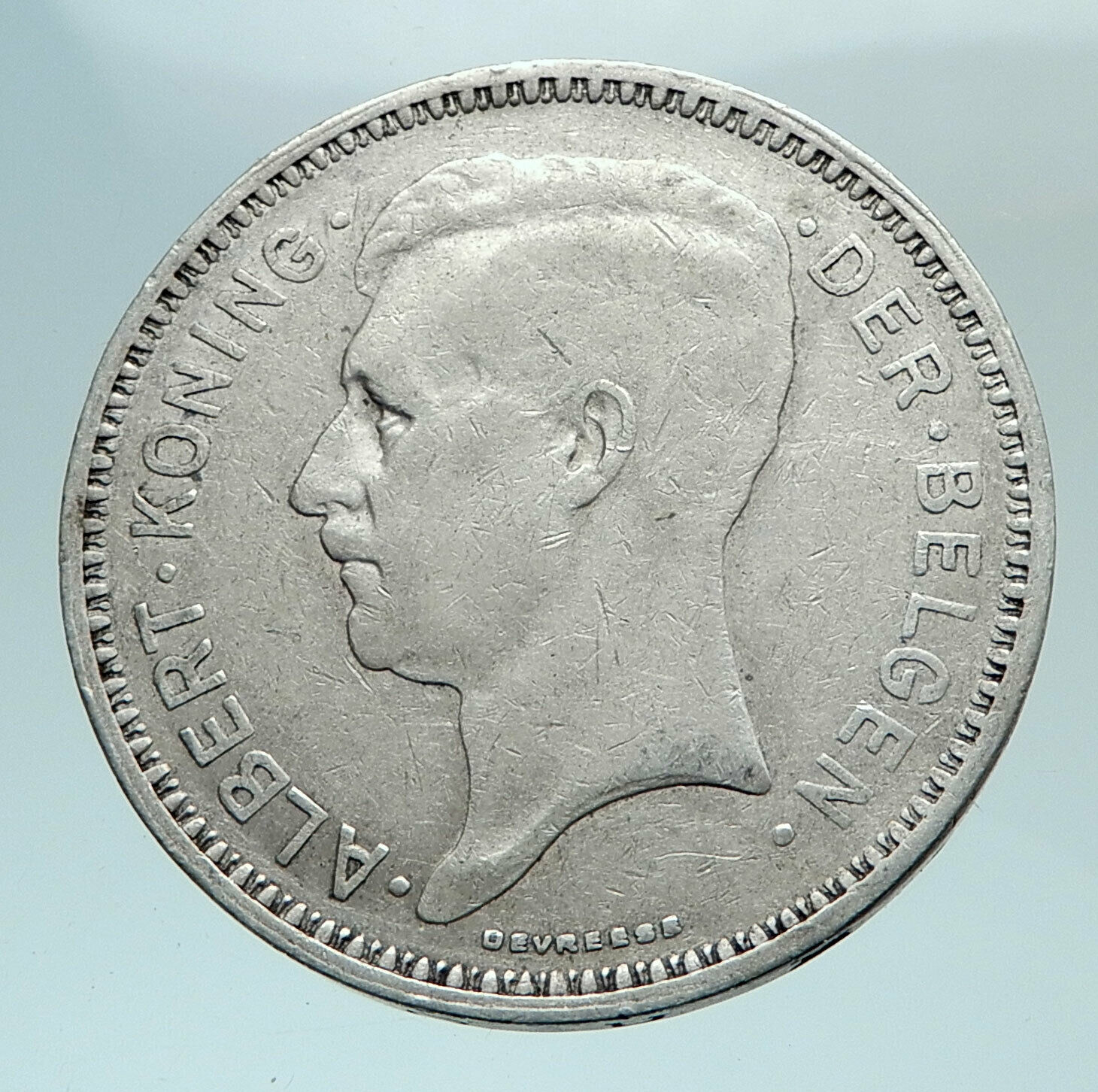|
Belgium – Bishopric of Liege
Johann Theodor of Bavaria
1752 Liard 23mm (3.30 grams)
Reference: KM# 155
I·THEOD·CAR·D·G·BAU·D, Quartered shield with coat-of-arms located on a slanted cross made of a staff and a sword, crown.
EP·ET·PRIN·LEO·DUX·B·M·F·C·L·H, In the center perron of Liege. Arranged in cross four different coats of arms: Loon (top), Franchimont (right), Horne (bottom) and Bouillon (left).
Coin Notes:
Until the french revolution spread beyond the borders, the Austrian Netherlands recognized and protected a clerical state within its territory: the Principate of Liège, governed by the prince-bishop residing there. Until the 1860’s the prince bishop had minting rights. Prince-bishop Jean-Theodore de Bavière (Johann Theodor von Bayern) abused his minting rights flooding the principate and the Austrian Netherlands with underweight circulation silver and poor alloys. Minting rights were withdrawn and the only coins produced later on were (low mintage) commemorative gifts to diplomats and high ranking visitors to the Prince-Bishop.
You are bidding on the exact item pictured, provided with a Certificate of Authenticity and Lifetime Guarantee of Authenticity.
 Johann Theodor of Bavaria (3 September 1703 – 27 January 1763) was a cardinal, Prince-Bishop of Regensburg, Prince-Bishop of Freising, and Prince-Bishop of Liège. Johann Theodor of Bavaria (3 September 1703 – 27 January 1763) was a cardinal, Prince-Bishop of Regensburg, Prince-Bishop of Freising, and Prince-Bishop of Liège.
Johann Theodor was a son of Elector Maximilian II Emanuel of Bavaria and of his wife Theresa Kunegunda Sobieska (daughter of King John III Sobieski of Poland). He was educated at the University of Ingolstadt in Bavaria and at the University of Siena.
Johann Theodor was elected bishop of Regensburg by its cathedral chapter on 29 July 1719, at age 15. The election received papal confirmation 14 October 1721. He was elected coadjutor bishop of Freising by its cathedral chapter on 5 November 1723. The election received papal confirmation on 12 April 1726, and he was permitted to retain the see of Regensburg.
Johann Theodor was ordained subdeacon in 1724. He was ordained priest on 8 April 1730. After receiving a papal dispensation on 4 August 1730 to receive episcopal consecration before the canonically required age (he was only 27 years old), he was consecrated bishop on 1 October 1730, in the cathedral of Münster, by his brother Clemens August of Bavaria, Archbishop and Elector of Cologne, assisted by Johann Adolf von Horde, titular bishop of Flaviopoli, and by Ferdinand Oesterhof, titular bishop of Agatonice.
On 9 September 1743 Johann Theodor was created a Cardinal-Priest by Pope Benedict XIV, but his name was reserved in pectore and was not announced until 17 January 1746. On 27 April 1746 he received the cardinalatial title of San Lorenzo in Panisperna.
On 23 January 1744 Johann Theodor was elected Prince-Bishop of Liège by the cathedral chapter. The election received papal confirmation 12 February 1744, and he was permitted to retain the sees of Regensburg and Freising.
Johann Theodor did not participate in the conclave of 1758 following the death of Pope Benedict XIV. He was the last representative of the Wittelsbach family to occupy the bishopric of Liège. In March 1761, shortly after the death of his elder brother Clemens August, Pope Clement XIII rejected his succession as Archbishop and Elector of Cologne because the pope entertained some doubt as to Johann Theodor’s moral conduct.
Johann Theodor was known as a great hunter, patron of music (he played the violoncello) and theatre, and held a splendid court at Liège. He was said to have had affairs with several women despite his clerical status and was liked by the inhabitants of the bishopric. Asthmatic and tubercular, he gave into the advice of his doctor, a physician named Steppler (a German from Munich), who claimed that his sickness originated from coal vapours. He thus went for regular stays in Germany, though this did not improve his health.
Johann Theodor died on 27 January 1763, in Liège, Belgium. He was buried in Saint-Lambert Cathedral in Liège while his heart was placed in the Chapel of Grace in the Shrine of Our Lady of Altötting.
 Belgium, officially the Kingdom of Belgium, is a sovereign state in Western Europe. It is a small, densely populated country which covers an area of 30,528 square kilometres (11,787 sq mi) and has a population of about 11 million people. Belgium, officially the Kingdom of Belgium, is a sovereign state in Western Europe. It is a small, densely populated country which covers an area of 30,528 square kilometres (11,787 sq mi) and has a population of about 11 million people.
 Straddling the cultural boundary between Germanic and Latin Europe, Belgium is home to two main linguistic groups: the Dutch-speaking, mostly Flemish community, which constitutes about 59% of the population, and the French-speaking, mostly Walloon population, which comprises 41% of all Belgians. Additionally, there is a small group of German-speakers who live in the East Cantons located around the High Fens area, and bordering Germany. Straddling the cultural boundary between Germanic and Latin Europe, Belgium is home to two main linguistic groups: the Dutch-speaking, mostly Flemish community, which constitutes about 59% of the population, and the French-speaking, mostly Walloon population, which comprises 41% of all Belgians. Additionally, there is a small group of German-speakers who live in the East Cantons located around the High Fens area, and bordering Germany.
Belgium is a federal constitutional monarchy with a parliamentary system of governance. It is divided into three regions and three communities, that exist next to each other. Its two largest regions are the Dutch-speaking region of Flanders in the north and the French-speaking southern region of Wallonia. The Brussels-Capital Region, officially bilingual, is a mostly French-speaking enclave within the Flemish Region. A German-speaking Community exists in eastern Wallonia. Belgium’s linguistic diversity and related political conflicts are reflected in its political history and complex system of government.
 Historically, Belgium, the Netherlands and Luxembourg were known as the Low Countries; it once covered a somewhat larger area than the current Benelux group of states. The region was called Belgica in Latin, after the Roman province of Gallia Belgica. From the end of the Middle Ages until the 17th century, the area of Belgium was a prosperous and cosmopolitan centre of commerce and culture. From the 16th century until the Belgian Revolution in 1830, when Belgium seceded from the Netherlands, the area of Belgium served as the battleground between many European powers, causing it to be dubbed the “Battlefield of Europe,” a reputation strengthened by both world wars. Historically, Belgium, the Netherlands and Luxembourg were known as the Low Countries; it once covered a somewhat larger area than the current Benelux group of states. The region was called Belgica in Latin, after the Roman province of Gallia Belgica. From the end of the Middle Ages until the 17th century, the area of Belgium was a prosperous and cosmopolitan centre of commerce and culture. From the 16th century until the Belgian Revolution in 1830, when Belgium seceded from the Netherlands, the area of Belgium served as the battleground between many European powers, causing it to be dubbed the “Battlefield of Europe,” a reputation strengthened by both world wars.
Upon its independence, Belgium participated in the Industrial Revolution and, during the course of the 20th century, possessed a number of colonies in Africa. The second half of the 20th century was marked by rising tensions between the Dutch-speaking and the French-speaking citizens fueled by differences in language and the unequal economic development of Flanders and Wallonia. This continuing antagonism has led to several far-reaching reforms, resulting in a transition from a unitary to a federal arrangement during the period from 1970 to 1993. Despite the reforms, tensions between the groups remain; the formation of a coalition government took 18 months following the June 2010 federal election.
Belgium is a founding member of the European Union, Eurozone, NATO, OECD and WTO, and a part of the trilateral Benelux Union. Its capital, Brussels, hosts several of the EU’s official seats as well as the headquarters of many major international organizations such as NATO. Belgium is also a part of the Schengen Area.
Belgium is a developed country, with an advanced high-income economy and is categorized as “very high” in the Human Development Index.
|





 Johann Theodor of Bavaria (3 September 1703 – 27 January 1763) was a cardinal, Prince-Bishop of Regensburg, Prince-Bishop of Freising, and Prince-Bishop of Liège.
Johann Theodor of Bavaria (3 September 1703 – 27 January 1763) was a cardinal, Prince-Bishop of Regensburg, Prince-Bishop of Freising, and Prince-Bishop of Liège. Belgium, officially the Kingdom of Belgium, is a sovereign state in Western Europe. It is a small, densely populated country which covers an area of 30,528 square kilometres (11,787 sq mi) and has a population of about 11 million people.
Belgium, officially the Kingdom of Belgium, is a sovereign state in Western Europe. It is a small, densely populated country which covers an area of 30,528 square kilometres (11,787 sq mi) and has a population of about 11 million people. Straddling the cultural boundary between Germanic and Latin Europe, Belgium is home to two main linguistic groups: the Dutch-speaking, mostly Flemish community, which constitutes about 59% of the population, and the French-speaking, mostly Walloon population, which comprises 41% of all Belgians. Additionally, there is a small group of German-speakers who live in the East Cantons located around the High Fens area, and bordering Germany.
Straddling the cultural boundary between Germanic and Latin Europe, Belgium is home to two main linguistic groups: the Dutch-speaking, mostly Flemish community, which constitutes about 59% of the population, and the French-speaking, mostly Walloon population, which comprises 41% of all Belgians. Additionally, there is a small group of German-speakers who live in the East Cantons located around the High Fens area, and bordering Germany. Historically, Belgium, the Netherlands and Luxembourg were known as the Low Countries; it once covered a somewhat larger area than the current Benelux group of states. The region was called Belgica in Latin, after the Roman province of Gallia Belgica. From the end of the Middle Ages until the 17th century, the area of Belgium was a prosperous and cosmopolitan centre of commerce and culture. From the 16th century until the Belgian Revolution in 1830, when Belgium seceded from the Netherlands, the area of Belgium served as the battleground between many European powers, causing it to be dubbed the “Battlefield of Europe,” a reputation strengthened by both world wars.
Historically, Belgium, the Netherlands and Luxembourg were known as the Low Countries; it once covered a somewhat larger area than the current Benelux group of states. The region was called Belgica in Latin, after the Roman province of Gallia Belgica. From the end of the Middle Ages until the 17th century, the area of Belgium was a prosperous and cosmopolitan centre of commerce and culture. From the 16th century until the Belgian Revolution in 1830, when Belgium seceded from the Netherlands, the area of Belgium served as the battleground between many European powers, causing it to be dubbed the “Battlefield of Europe,” a reputation strengthened by both world wars.




